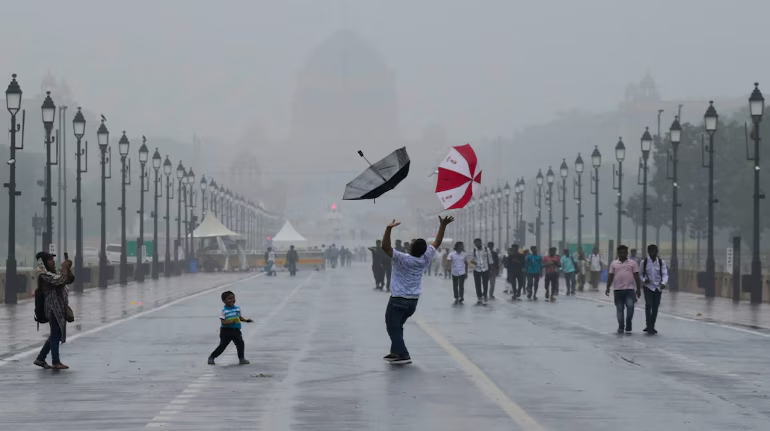Delhi witnessed an extraordinary weather event on June 28 as the monsoon arrived with an unprecedented downpour, marking the heaviest June rainfall in 88 years. The city’s primary weather station, the Safdarjung Observatory, recorded a staggering 228.1 mm of rain in the 24 hours ending at 8:30 a.m., surpassing the monthly average of 74.1 mm by over three times. This remarkable deluge has not been seen since 1936, according to the India Meteorological Department (IMD).
The intense rain, which began around 3 a.m., caused widespread devastation across the national capital. One of the most significant incidents was the collapse of the roof at Terminal-1 of Delhi Airport, resulting in the tragic death of one individual and disrupting flight operations. Additionally, a 39-year-old man in Rohini was electrocuted, and three laborers were trapped under a collapsed under-construction wall in Vasant Vihar, with rescue efforts ongoing throughout the day. The early morning downpour brought the bustling metropolis to a standstill. Numerous reports of homes being inundated emerged from various parts of the city, including the upscale localities of Lutyens Delhi, Hauz Khas, South Extension, and Mayur Vihar. Vehicles were submerged, and traffic snarls extended for miles, causing severe disruptions for commuters. Key tunnels, including the one at Pragati Maidan, were closed, stranding thousands.
The IMD, which categorises very heavy rain as between 124.5 mm and 244.4 mm in a day, confirmed the arrival of the monsoon shortly after the rain commenced. The weather bulletin indicated that heavy to very heavy rainfall is expected to continue over the weekend, with isolated places in Delhi likely to experience thunderstorms accompanied by lightning and gusty winds reaching speeds of 30 to 40 kmph. The sudden and severe rainfall provided a much-needed respite from the intense summer heat, but also highlighted the vulnerabilities in the city’s infrastructure. Flooding and waterlogging were reported even in well-developed areas, raising concerns about urban planning and preparedness for such extreme weather events.
The IMD’s forecast warns of further heavy to very heavy rainfall on June 29 and June 30, suggesting that the city needs to brace for continued challenges. This historic rainfall event underscores the critical importance of enhancing urban infrastructure and emergency response mechanisms to mitigate the impact of such natural calamities.
As Delhi grapples with the aftermath of this unprecedented monsoon onset, both authorities and residents must remain vigilant. The focus must shift towards sustainable urban development and robust disaster management systems to better handle future occurrences of extreme weather.
================================================================




